Last-Minute NYC Holiday Gift Guide 🎁
We’ve created a holiday gift guide with presents for the intrepid New Yorker that should arrive just in time—


In Weehawken at dawn, Secretary of the Treasury Alexander Hamilton and Vice President Aaron Burr met with their guns drawn for a duel. Both men would leave alive, but only one would survive the following evening. This duel was a result of years of political rivalry between the two government officials. Hamilton saw Burr as an opportunist hazardous to the American government, and Burr began the rivalry when he won a Senate seat from Hamilton’s father-in-law, Philip Schuyler. Burr’s Senate victory resulted in decreased support for Hamilton’s party, the Federalists.
Hamilton pushed Burr to the limit when he attacked Burr’s character as he ran for New York governor. When Burr lost the election, he wanted to regain his honor. Dueling Hamilton, the man who had defamed him, seemed like a logical course of action for the era.
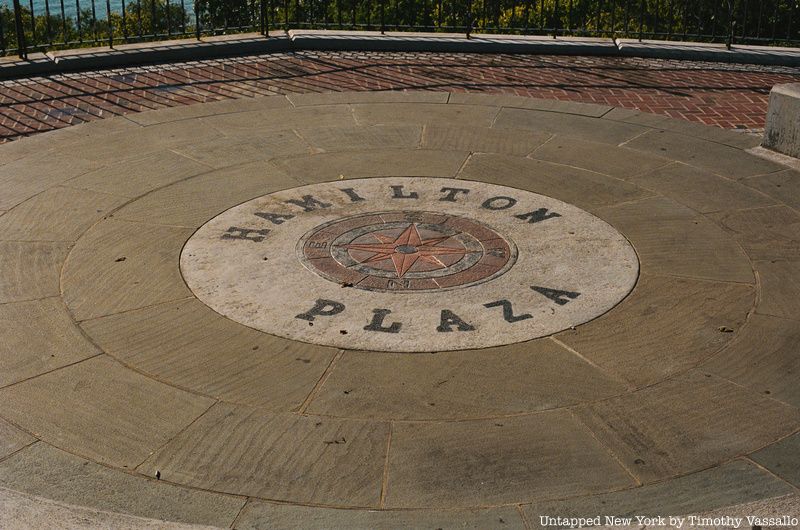
On July 11, 1804, the two men met for an “affair of honor,” otherwise known as a duel. They met at 7 a.m. at the Weehawken Dueling grounds, which is also where Hamilton’s son, Philip Hamilton, died in a duel against New York lawyer George Eacker three years prior. This duel arose after Philip felt he needed to defend the honor of his father against Eacker, who had spread rumors about the young treasurer. Hamilton and his son both used the same pistols at their final duels, and neither man made amends before using them.
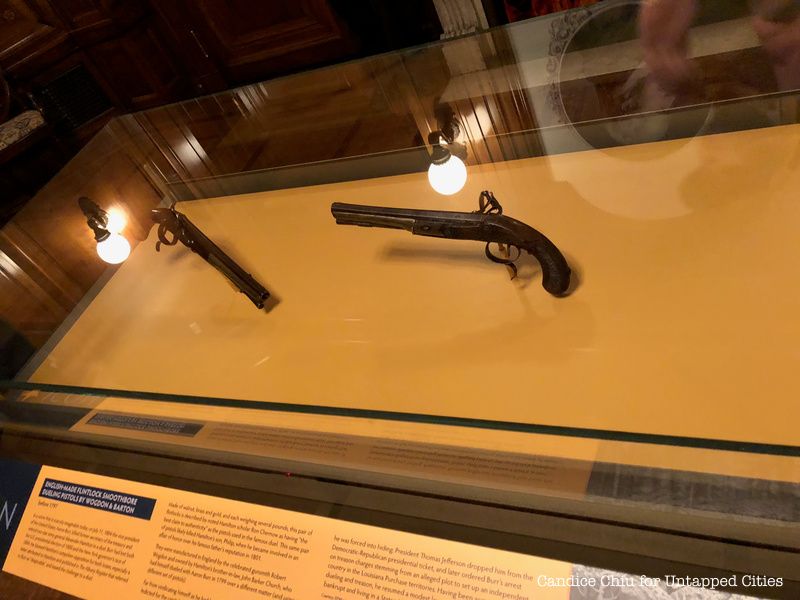
Even though Hamilton made amends at the other affairs of honor in which he had participated, no such agreement occurred at the duel with Burr. Hamilton’s witness claimed that he first shot his gun in the air as protest to a duel he felt was morally wrong, but Burr asserted that Hamilton shot at him and missed. What occurred next would eventually end Hamilton’s life: Burr shot Hamilton in the stomach, lodging a bullet near his spine.
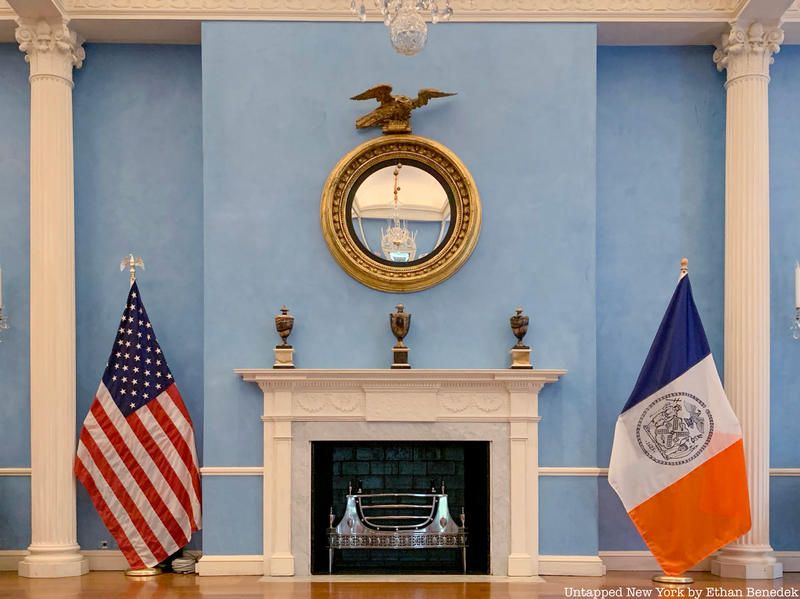
Following the fatal shot, some of the unwounded at the battlefield took the fallen Treasurer back to the Bayard House on present day 82 Jane Street in Greenwich Village. The fireplace by which he died the following day is now in the Gracie Mansion on the Upper East Side. Angelica and Eliza Schuyler were by his side when he died. He is buried at Trinity Church in Manhattan’s Financial District, and the dueling pistols used by Burr and Hamilton are located in the headquarters of J.P. Morgan Chase on 277 Park Avenue.
Duels rarely resulted in death and were falling out of favor at the time, so people were outraged by Hamilton’s death. As a result, Burr was charged with murder in New York and New Jersey following Hamilton’s death. However, he finished his term as Vice President without persecution. Sometime after his term ended, Burr spent time in Georgia, where he was able to further avoid persecution.

Without Hamilton as a rival, Burr slowly fell into a self-destructive craze. Working with James Wilkinson, commander of the U.S. Army, he plotted to seize the Louisiana Territory for an independent territory he sought to lead. Following its failure, border troubles prompted him to conspire to unsuccessfully seize Spanish America as well.
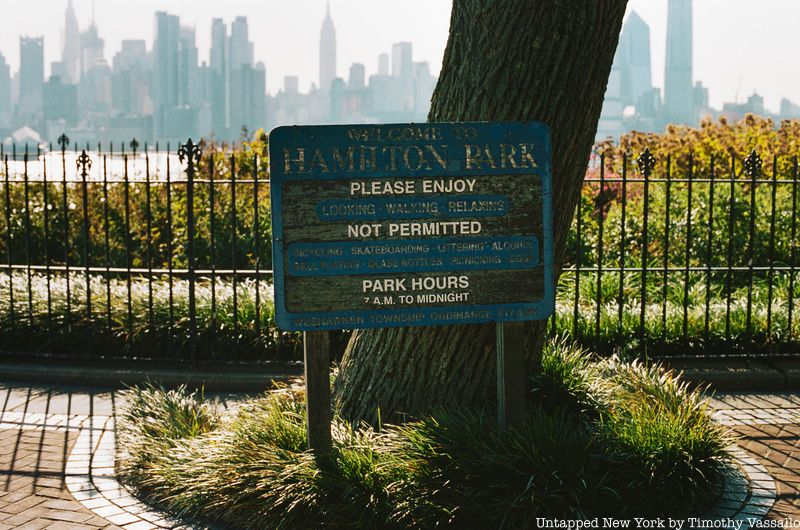
In 1806, a year following his independent territory plans, Burr led a group of armed individuals to New Orleans. When the U.S. began to investigate Burr, Wilkinson turned against Burr and accused him of treason. The former Vice President was arrested for treason but was eventually acquitted. He then fled to Europe, for America considered him a traitor and murderer. He only returned to New York where he kept to himself.
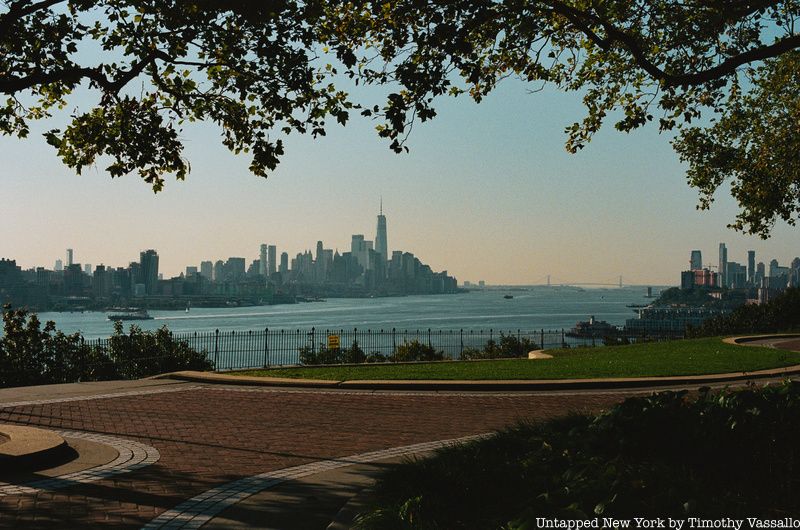
Burr’s downfall is his legacy, whereas the legacy of Alexander Hamilton remains in Lin-Manuel Miranda’s musical and film and the various landmarks in New York City and beyond. They honor the esteemed politician more than 200 years after his death. His home, Hamilton Grange, has moved twice and now remains in St. Nicholas Park in Hamilton Heights. Hamilton Park in Weehawken, New Jersey commemorates where the Hamilton-Burr duel occurred.
Next, check out the top 10 secrets of Hamilton’s Grange, the only home Hamilton owned!
Subscribe to our newsletter